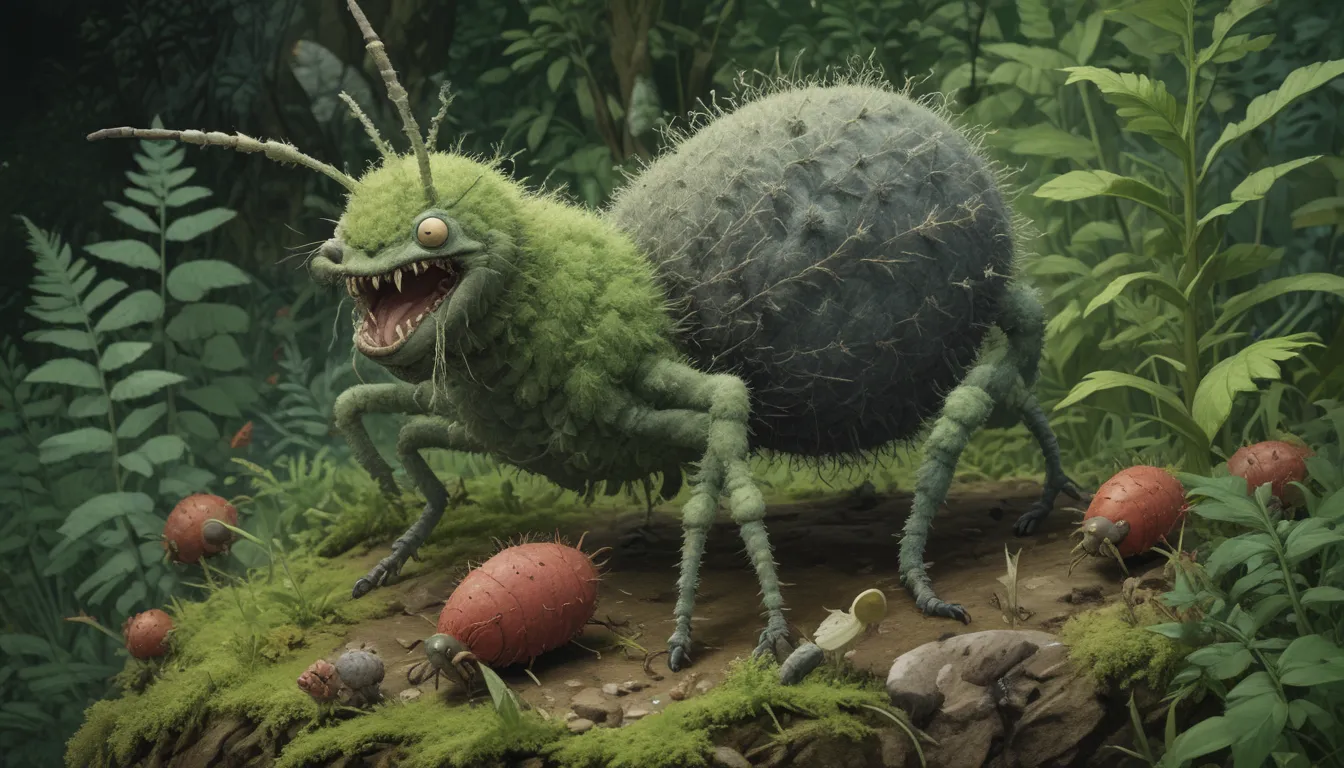A Comprehensive Guide to Identifying and Managing Woolly Aphids

Are you tired of trying to distinguish between different types of white waxy insects infesting your plants, such as scales and mealybugs? Well, get ready to meet another fascinating insect species – the woolly aphid! This fluffy insect takes the game of waxy coating to a whole new level, especially when it comes to trees and shrubs.
Aphids are well-known plant pests, and the woolly varieties can be just as tricky to identify and control as their smooth, shiny counterparts. In this comprehensive guide, we will provide you with all the information you need to effectively deal with these sap-sucking pests when they invade your apple trees or landscape plants.
What You’ll Learn
Here’s a breakdown of what we’ll cover in this guide to help you tackle woolly aphids:
- What Are Woolly Aphids?
- Identification
- Biology and Life Cycle
- Monitoring
- Organic Control Methods
We’ll delve into each of these topics in detail to equip you with the knowledge and strategies you need to manage woolly aphid infestations effectively.
What Are Woolly Aphids?
Belonging to the Aphididae subfamily Eriosomatinae, woolly aphids feed on the sap of various plants, with a particular affinity for trees and shrubs like apples, cotoneaster, maple, elm, alder, and beech. They can wreak havoc on both underground and aboveground plant parts, causing twisted and curled leaves, yellowing foliage, and gall formation.
While these pests may not cause significant damage to plant health, they can lead to aesthetic issues, including the unsightly presence of white fluffy insects and the growth of black sooty mold on leaf surfaces due to their honeydew excretion.
Identification
Woolly aphids are easily identifiable by their three-millimeter-long pear-shaped bodies covered in a white, waxy, fluffy coating. Several common species of woolly aphids can be found infesting plants, with the host plant often providing clues for species identification.
For instance, the woolly apple aphid (Eriosoma lanigerum) is a prevalent pest of apple trees, while the woolly elm aphid (Eriosoma americanum) targets American elm foliage and serviceberry roots. Another species, the woolly alder aphid (Prociphilus tessellatus), is known for its fluffy appearance and infests silver maple and alder trees.
Biology and Life Cycle
Most woolly aphids have two primary hosts on which they alternate feeding and reproducing. Eggs are typically laid on the primary host, where they overwinter before hatching in the spring. Female aphids then produce live offspring, leading to multiple generations of reproduction without males on the primary host.
As the season progresses, winged females migrate to the secondary host, where they continue feeding and reproducing. Towards the end of the season, winged females return to the primary host, followed by the emergence of males and females that mate and lay overwintering eggs.
Monitoring
Regular monitoring is crucial for detecting woolly aphid infestations early before they escalate and cause significant damage. Look for shiny, sticky honeydew and waxy shed skins on leaf undersides, as well as the presence of pear-shaped insects.
While woolly aphids can be mistaken for mealybugs and scale insects, their distinct pear shape and the two tailpipes (cornicles) at their abdomen tips can help differentiate them from other sap-sucking pests.
Organic Control Methods
When it comes to managing woolly aphids, an integrated pest management (IPM) approach combining cultural, biological, and physical control methods is recommended. Here are some organic strategies you can use to control these pests effectively:
Cultural and Physical Control
- Maintain plant health to promote tolerance and minimize damage.
- Avoid planting susceptible hosts in close proximity to each other or in areas with wild alternate hosts.
- Use strong water streams or stiff brushes to dislodge aphid colonies on smaller trees and shrubs.
- Prune and destroy heavily infested twigs and branches to reduce pest populations.
Biological Control
- Encourage natural predators like parasitic wasps, lacewings, ladybugs, hoverflies, and earwigs to feed on woolly aphids.
- Introduce commercial predators such as Aphidoletes aphidimyza (aphid midge) to control indoor infestations effectively.
- Utilize beneficial nematodes like Steinernema carpocapsae to target underground aphid colonies.
Organic Pesticides
- Use horticultural oils and insecticidal soaps to control woolly aphids, ensuring thorough coverage for effectiveness.
- Avoid using chemical pesticides unless absolutely necessary, as they can harm beneficial insects and disrupt natural pest control processes.
Conclusion
By familiarizing yourself with woolly aphids’ characteristics, life cycle, and control methods, you can effectively manage infestations without resorting to harsh chemical treatments. Remember to monitor your plants regularly, adopt preventative measures, and leverage natural predators to keep woolly aphids in check.
Have you encountered woolly aphids in your garden before? Share your experiences and control strategies in the comments below. For more tips on dealing with plant-sucking insect pests, be sure to check out our guides on controlling aphids, identifying thrips, and managing spider mite infestations.
Don’t let woolly aphids take over your plants – arm yourself with the knowledge and tools to combat these fluffy pests effectively. With a proactive approach to monitoring and control, you can keep your trees and shrubs healthy and free from unwanted insect guests.





